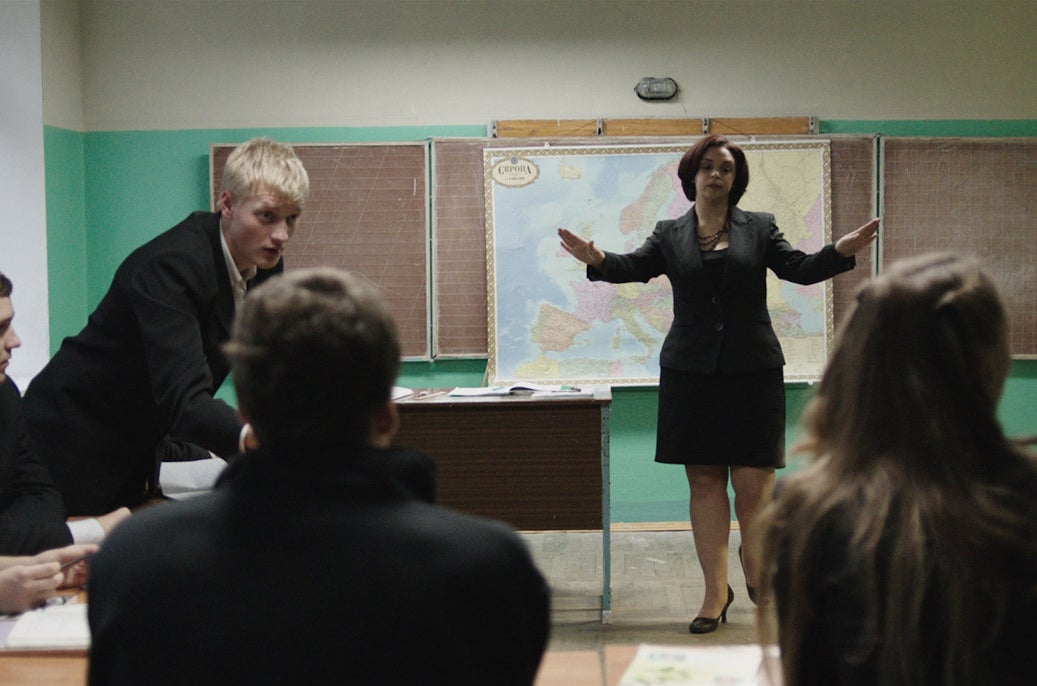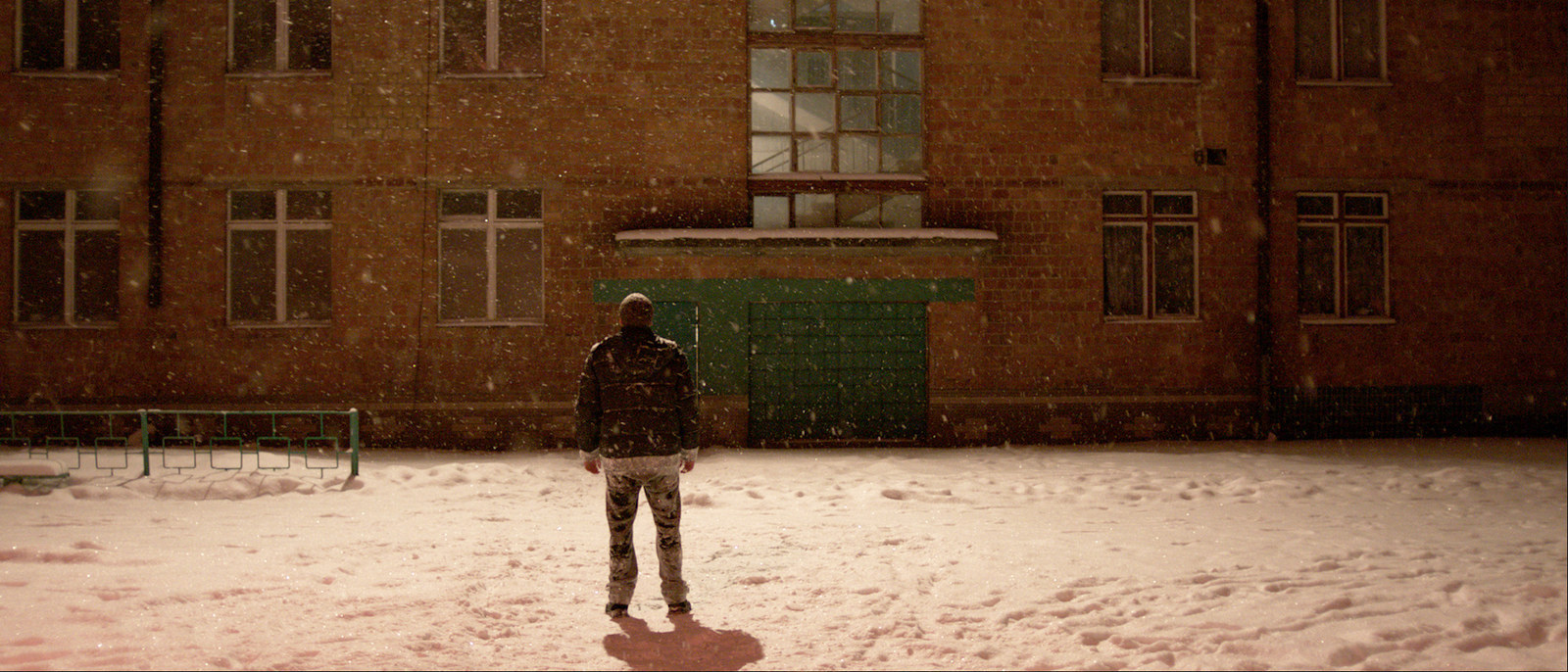
There's plenty of talking in The Tribe — arguing, lecturing, bargaining. Sometimes it leads to sex, and more often it leads to violence. But none of it is done out loud.
Miroslav Slaboshpitsky's The Tribe, which is opening in select cities this week, is set in a Ukrainian school for the Deaf, and it unfolds entirely in sign language. The cast is made up of Deaf performers, all of whom are first-time actors, and fearless ones at that, considering the movie takes its characters to some bleak places, including a stark apartment where a back-alley abortion is shown in one long, pitiless shot.
Sign language has been getting a more prominent, less "very special episode" place on screen in the last few years — mostly thanks to ABC Family's Switched at Birth, which features several Deaf and hard-of-hearing characters, and did a second-season episode with all its dialogue in ASL. But The Tribe goes a step further, planting itself in territory that challenges the way a viewer processes the movie. It foregoes subtitles, a fact that's proudly if not quite grammatically splashed on screen before the film begins ("There are no translation, no subtitles, no voiceover").


This is a choice that feels like a gimmick until it doesn't, until it starts to seem rather profound. Sign language is as translatable as any spoken one, and no one's asking non-francophones to buy tickets to an unsubtitled French film just for the incomprehensible art of it. The Tribe's story isn't hard to follow — a newcomer to the school (Grigoriy Fesenko, playing a character we learn only in the closing credits is named Sergey) discovers that some of its students have formed a crime and prostitution ring, and joins them until he falls for one of the working girls (Yana Novikova). But the film is filled with exchanges that leaves anyone not fluent in Ukrainian sign language guessing at the details, searching for clues in the expressive signing that often involves the speaker's whole body.
These touches are all by design — in the press notes, Slaboshpitsky states his intentions were to make "a modern silent film." And The Tribe's approach to the world it depicts is deliberately a little abstract. Its wordlessness is all-encompassing. The school's administrators also only sign, and the few interactions with the hearing world are without audible speech. The director uses long, frequently elaborate, elegantly composed takes, some of which make sense only when we see what follows. The Tribe isn't meant to be any kind of naturalistic film about the Deaf experience; its determinedly downbeat progression can feel purely and sometimes punishingly art-filmy, and that's before anyone dies.

The Tribe revels in the distance it leaves between its audience and its characters, but in placing viewers on the outside, it also creates an experience that's almost perversely empathetic. Like all its boys and the two terrifyingly indifferent girls — who cheerfully blow kisses at one another while climbing into passenger seats for quick, paid-for fumblings with truck drivers — we're put into a world in which everyone else communicates in a way we can only try to keep up with, gathering context from faces and from everything we know that's come before.
The school and the gang are part of a closed world, one that happens to be toxic, but one that's also wholly theirs — we're the interlopers. Going without subtitles is hardly the same as living without hearing, or being thrust in the middle of a spoken conversation and trying to follow along, but it does offer its own sort of dizzying remove. The movie's human commonalities — the way the characters' emotions come through so clearly, even as the details of what they're signing remain obscure — are marvelously enlightening, even when its story gets very dark.
